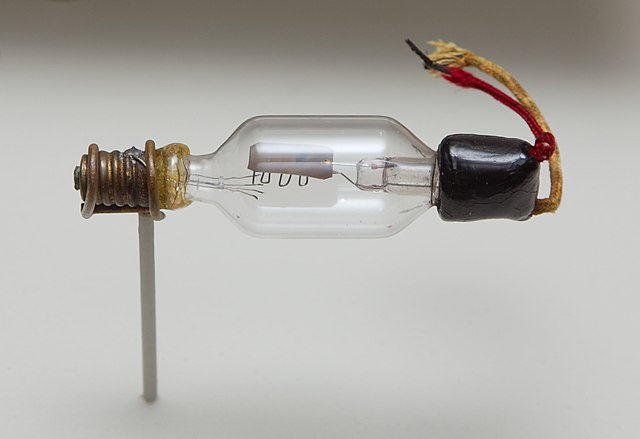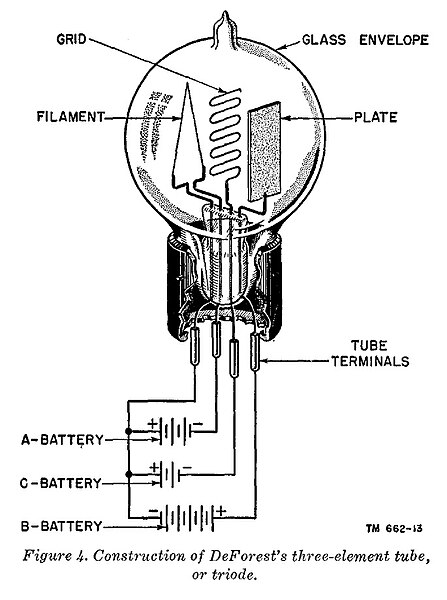The Audion was an electronic detecting or amplifying vacuum tube invented by American electrical engineer Lee de Forest as a diode in 1906. Improved, it was patented as the first triode in 1908, consisting of an evacuated glass tube containing three electrodes: a heated filament, a grid, and a plate. It is important in the history of technology because it was the first widely used electronic device which could amplify. A low power signal at the grid could control much more power in the plate circuit.
Triode Audion vacuum tube from 1908. The filament (which was also the cathode) was at the lower left inside the tube, but has burned out and is no longer present. The filament's connecting and supporting wires are visible. The plate is at the middle top, and the grid is the serpentine electrode below it. The plate and grid connections leave the tube at the right.
An Audion radio receiver by de Forest. The Audion tubes were mounted upside down to prevent the delicate filaments from sagging and touching the grids. This receiver provided the ability to choose operation of either one of the two provided detector tubes.
Audions and early triodes developed from them, 1918 Bottom row (D): De Forest Audions and oscillaudions Third row (C): Pliotrons, developed at General Electric by Langmuir Second row (B): triodes developed at Western Electric which bought the rights from de Forest in 1913. Top row (A): French triodes. The French government gained the right to manufacture Audions in 1912 when de Forest failed to renew his French patents for lack of $125.
The first Audion AM radio transmitter, built by Lee de Forest and announced April, 1914
A vacuum tube, electron tube, valve, or tube, is a device that controls electric current flow in a high vacuum between electrodes to which an electric potential difference has been applied.
Later thermionic vacuum tubes, mostly miniature style, some with top cap connections for higher voltages
Hot tubes in an audio power amplifier, emitting their distinctive red-orange glow
Illustration representing a primitive triode vacuum tube and the polarities of the typical DC operating potentials. Not shown are the impedances (resistors or inductors) that would be included in series with the C and B voltage sources.
Radio station signal generator with vacuum tubes








